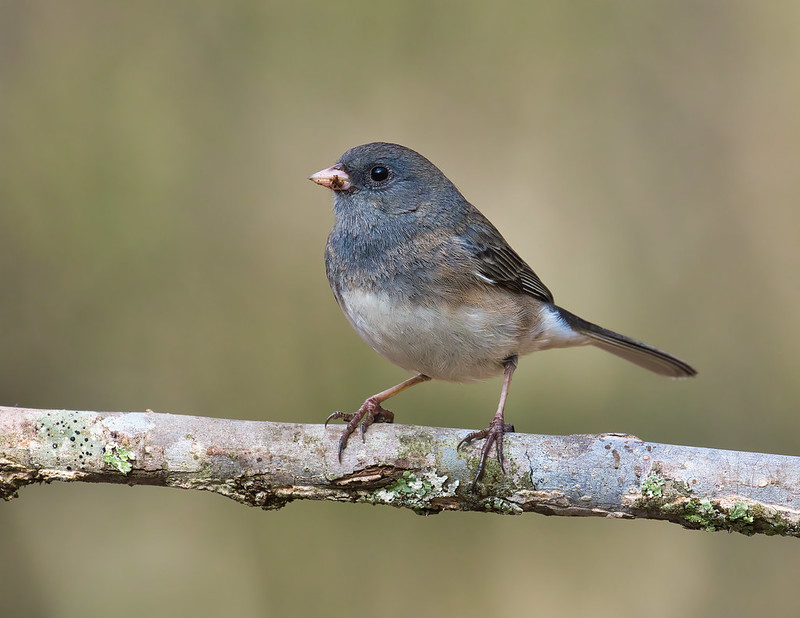On March 28, 2016, I had the opportunity to photograph a female Dark-eyed Junco in Arkansas’s Ouachita Mountains. These birds are abundant in the area, particularly during winter. In fact, I often see them on hikes and at my feeders. However, they usually forage on the ground rather than perching for photos, which makes capturing them a bit challenging.

Dark-eyed Juncos are sparrows with distinct plumage that varies by sex and region. For example, the female I photographed had a brown back and a grayish head and breast, making her more subdued compared to the males. Interestingly, they are often called “snowbirds” because of their prevalence in winter.
Although they aren’t as colorful as other birds, Dark-eyed Juncos are fascinating in their own way. For instance, they forage by scratching the ground, hopping and flapping their wings to uncover seeds and insects. Additionally, their trilling songs add charm to the forests and mountains they inhabit.
Photographing these birds is rewarding, but it requires patience and skill. Moreover, they serve as a reminder of the incredible wildlife diversity in the Ouachita Mountains. As a result, I’m always eager to capture more of their beauty in the future.
Behind the Shot: How I Captured This Image
On this particular day, a flock of Dark-eyed Juncos was feeding in my yard. To get closer without disturbing them, I used a small ground blind. Meanwhile, I handheld my Canon EOS 7D Mark II with a Canon EF 100-400mm f/4.5-5.6L IS II USM lens for flexibility.
Camera Settings:
- Mode: AV (Aperture Priority)
- Aperture: f/6.3
- ISO: 800
- Shutter Speed: 1/1000 sec
- Exposure Compensation: +1/3 EV
- Focal Length: 400mm
These settings allowed me to freeze the bird’s motion while keeping the details sharp. Consequently, the result is a clean, natural shot that highlights the subtle beauty of this often-overlooked species.
In conclusion, photographing wildlife like the Dark-eyed Junco reminds me of the wonders found in even the most familiar settings. Therefore, I’m excited to continue exploring and capturing the diverse wildlife of the Ouachita Mountains.
